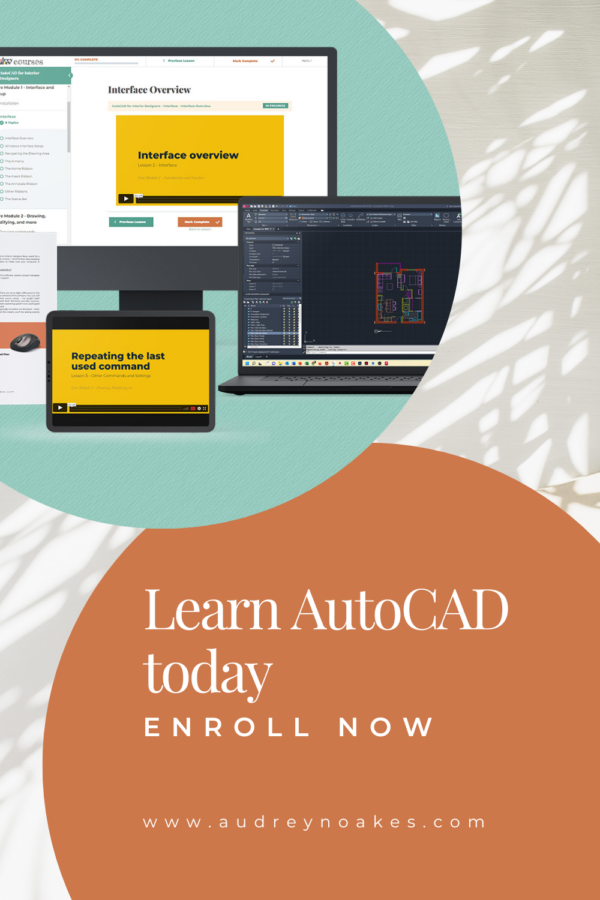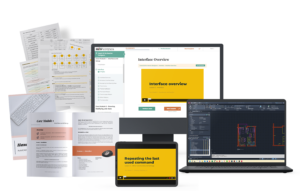For years now, many in the design industry have promoted hyper-realistic renderings as the best—maybe even the only—way to communicate interior design concepts to clients. With so much emphasis on the power of 3D visualization, it’s easy to think that if you’re not producing flawless, life-like renderings, you’re missing out.
But here’s the truth: while hyper-realistic renderings certainly have their place (programs like Enscape have revolutionized the way we present designs), they aren’t the only effective method. In fact, relying solely on them might not always be the best choice for every designer. They can even be misleading your client or misrepresenting your design.
It’s important to realize that embracing more creative and analog strategies, such as using Photoshop or hand-drawn sketches, can often be just as impactful—if not more so—in conveying your design vision. These methods encourage flexibility, authenticity, and a personal touch that can help you stand out in a sea of digital perfection.
What’s Not So Great About Over-Reliance on Hyper-Realistic Renderings
Hyper-realistic renderings can be impressive, but there are a few downsides to relying on them exclusively:
- They consume a lot of time and energy. Creating renderings with high levels of detail can be incredibly time-consuming, which can delay your ability to communicate your ideas quickly.
- They can stifle creativity. Focusing too much on achieving visual perfection can limit your ability to explore more conceptual or abstract elements of the design.
- They may distract clients from the bigger picture. Clients can get hung up on small details in renderings—like the exact texture of a cushion—when your primary goal is to communicate the overall mood and functionality of the space.
- The industry is changing. While high-quality renderings are still valuable, clients today are more visually literate and often respond just as well to quick, concept-driven visuals that communicate the story behind the design. This allows for more collaboration and creative dialogue early on.
Why Being More Creative Can Help You Stand Out
If you want to differentiate yourself from other designers, incorporating more creative visualization techniques can be a game-changer. Instead of relying exclusively on renderings, try experimenting with other methods that are equally effective but offer more flexibility and a unique edge.
For example:
- Photoshop mockups allow for faster iteration and real-time adjustments during client presentations. This can encourage more open conversations and ensure that your client feels involved in the design process.
- Hand-drawn sketches (both on paper or using the app Procreate) give your visuals a personal, bespoke quality that clients appreciate. These sketches can feel more intimate and approachable, allowing your clients to focus on the core concept of your design rather than every minute detail.
These methods aren’t just practical; they also communicate a deeper level of creative thinking. By using a range of tools, you can demonstrate your versatility as a designer and emphasize the storytelling aspect of your designs, which clients are often drawn to.

A Better Way to Communicate Your Design Ideas
Instead of spending hours perfecting every texture or light setting in a rendering, consider these alternative approaches that allow you to convey your design vision more effectively and efficiently:
Step #1: Clarify Your Goals
Before diving into any visualization method, get clear on your ultimate goals. Are you trying to convey a perfect, finished space, or are you showcasing ideas and possibilities? If the latter, hyper-realistic renderings might not be the best tool for the job.
Define what success looks like for your design presentation. If your goal is to spark conversation and get client feedback, quicker and more flexible methods like Photoshop and sketches can serve you better.
Step #2: Leverage Photoshop and Analog Methods
Photoshop is a fantastic tool for creating mood boards, mockups, and concept images. It allows you to layer textures, colors, and furnishings quickly, providing clients with a dynamic visual representation of the design without spending hours on intricate details.
Similarly, hand-drawn sketches can communicate design ideas in a more conceptual way. Clients tend to appreciate the artistry and uniqueness of sketches, which also make the design process feel more personalized and collaborative.
Step #3: Use Renderings Strategically
That said, there’s no denying that hyper-realistic renderings have their place. Tools like Enscape can still be an excellent way to present a polished, fully-realized design—particularly at the final stages of the process. The key is to use them strategically. You don’t need to rely on them from the very beginning; instead, integrate them when they add the most value, such as during final client approvals or presentations to stakeholders.
Next Steps
In conclusion, while hyper-realistic renderings are a valuable tool, they shouldn’t be the only method you rely on to communicate your interior design ideas. By incorporating more creative and flexible techniques, like Photoshop and hand-drawn sketches, you can present a unique vision that resonates with clients and differentiates you from other designers.
Check out some of my other posts on creative visualization methods in design, where you’ll find tips, case studies, and more on how to effectively communicate your ideas:
- How to render a floor plan in Photoshop: Adding color and texture
- Sketchup + Photoshop: Rendered 3D Visuals Mini Course
Remember, there’s no one-size-fits-all approach to design visualization. You can achieve stunning results in ways that feel authentic to you while still delivering what your clients need.






